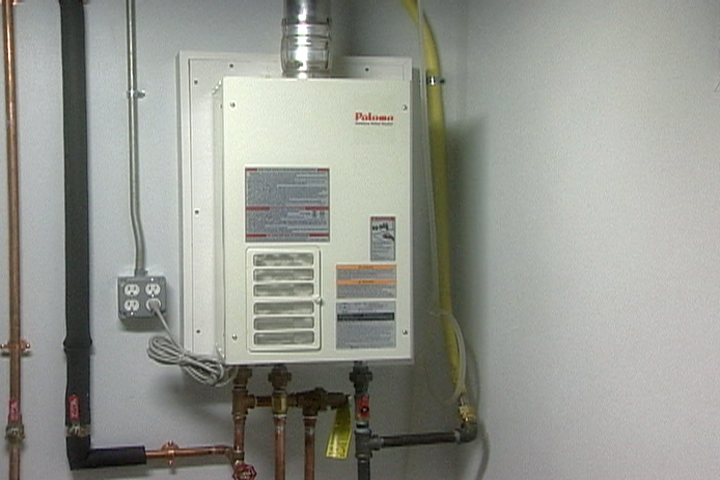Important Care Strategies for Your Home's Hot Water System
Click HereJust how do you actually feel when it comes to What Kind of Maintenance Do Water Heaters Need??

Hot water is necessary for daily comfort, whether it's for a refreshing shower or washing recipes. To guarantee your warm water system runs successfully and lasts longer, regular upkeep is key. This short article offers useful ideas and understandings on just how to preserve your home's warm water system to stay clear of disturbances and pricey fixings.
Intro
Keeping your home's hot water system may appear daunting, but with a few basic actions, you can guarantee it runs efficiently for many years to come. This overview covers every little thing from recognizing your warm water system to do it yourself maintenance pointers and recognizing when to call specialist aid.
Relevance of Keeping Your Warm Water System
Normal upkeep not only extends the life expectancy of your hot water system but additionally guarantees it operates efficiently. Disregarding upkeep can bring about reduced effectiveness, higher energy bills, and also premature failure of the system.
Signs Your Warm Water System Requirements Maintenance
Knowing when your hot water system needs focus can stop major issues. Keep an eye out for indications such as inconsistent water temperature level, odd sounds from the heating unit, or rustic water.
Comprehending Your Hot Water System
Before diving into maintenance tasks, it's helpful to recognize the fundamental elements of your hot water system. Typically, this consists of the water heater itself, pipes, anode rods, and temperature controls.
Month-to-month Upkeep Tasks
Normal regular monthly checks can help capture small problems before they escalate.
Purging the Water Heater
Purging your hot water heater removes debris accumulation, improving performance and extending its life.
Checking and Replacing Anode Rods
Anode poles avoid deterioration inside the storage tank. Inspecting and replacing them when broken is essential.
Checking and Adjusting Temperature Level Settings
Readjusting the temperature setups guarantees optimum performance and safety and security.
Do It Yourself Tips for Upkeep
You can perform numerous maintenance tasks on your own to keep your warm water system in leading condition.
Looking for Leakages
On a regular basis inspect pipelines and connections for leaks, as these can cause water damage and higher expenses.
Testing Stress Relief Valves
Examining the pressure relief valve guarantees it functions appropriately and avoids excessive pressure buildup.
Protecting Pipes
Insulating hot water pipelines minimizes warmth loss and can conserve energy.
When to Call a Professional
While do it yourself maintenance is beneficial, some concerns need professional expertise.
Facility Problems Needing Professional Aid
Examples consist of major leakages, electrical problems, or if your hot water heater is constantly underperforming.
Routine Specialist Upkeep Benefits
Expert maintenance can consist of extensive examinations, tune-ups, and guaranteeing conformity with security standards.
Final thought
Regular upkeep of your home's hot water system is necessary for effectiveness, long life, and cost financial savings. By complying with these pointers and understanding when to seek expert aid, you can guarantee a reliable supply of warm water without unexpected interruptions.
How to Maintain an Instant Hot Water Heater
Before tinkering with your hot water heater, make sure that it’s not powered on. You also have to turn off the main circuit breaker and shut off the main gas line to prevent accidents. Also turn off the water valves connected to your unit to prevent water from flowing into and out of the appliance. 2. When you’re done, you have to detach the purge valves’ caps. These look like the letter “T†and are situated on either side of the water valves. Doing so will release any pressure that has accumulated inside the valves while at the same time avoid hot water from shooting out and burning your skin. 3. When the purge valves’ caps are removed, you have to connect your hosing lines to the valves. Your unit should have come with three hoses but if it didn’t, you can purchase these things from any hardware or home repair shops. You can also get them from retail stores that sell water heating systems. Read the user’s manual and follow it to complete this task properly. When the hosing lines are connected, open the purge port’s valves. 4. You should never use harsh chemical cleaners or solutions when cleaning your unit. Make use of white vinegar instead. It should be undiluted and you’ll probably use about 2 gallons. 5. Now flush your water heater. This task should probably take about 40 minutes. We can’t give you specific directions for this because the procedure is carried out depending on the type, model and brand of your heater. With that being said, refer to the user’s manual. 6. When you’re done draining the unit, you have to turn off the purge port valves again. Remove the hosing lines that you earlier installed on each of the water valves. Put the valve caps (purge port) back in their respective places and be very careful so as not to damage the rubber discs that are found inside these caps. 7. Now that everything’s back in place, check your user’s manual again to find out how to reactivate your water heating system. 8. Once it is working, turn one of your hot water faucets on just to let air pass through the heater’s water supply pipes. Leave the tap on until water flows smoothly out of it. https://www.orrplumbing.com/blog/2014/september/how-to-maintain-an-instant-hot-water-heater/

As an avid person who reads about Tips on Maintaining a Water Heater, I think sharing that piece of content was worth the trouble. Sharing is good. One never knows, you might be doing someone a favor. I thank you for your readership.
Book My Estimate